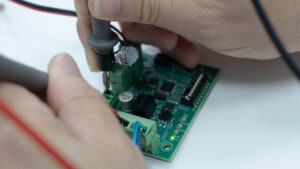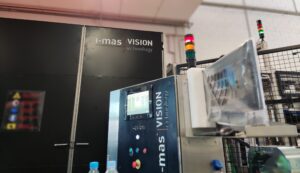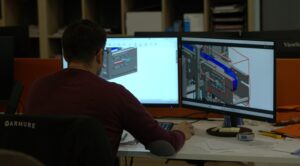The industrial transformation of recent decades has been marked by a common denominator: automation. From the first industrial robots of the 1970s to today’s smart factories, technology has gone from performing repetitive tasks to becoming a strategic factor for competitiveness.
Today, the combination of advanced robotics, industrial automation, and computer vision is redefining how companies produce, control quality, and adapt to change.
Industrial automation: the engine of efficiency
In an increasingly demanding global market, industrial automation allows companies to improve productivity without sacrificing quality. By integrating control systems, sensors, and intelligent software, factories are able to reduce cycle times, minimize errors, and optimize resource usage.
But automation does not mean eliminating the human factor: it means freeing teams from repetitive tasks so they can focus on innovation, supervision, and continuous improvement. Connected automation systems, combined with real-time data analysis, enable faster and more informed decision-making, a key element in maintaining competitiveness in high-pressure environments.
Industrial robotics: precision, flexibility, and adaptability
Industrial robotics is no longer exclusive to large automotive manufacturers. Today, thanks to advances in collaborative robotics (cobots) and lightweight robotics, SMEs can also access solutions that improve their production capacity. These systems are capable of working safely alongside operators, adapting to different tasks, and reconfiguring themselves according to production needs.
The key to competitiveness lies in this operational flexibility. Production lines are no longer designed for a single product, but to adapt to variants, customization, or short runs without compromising efficiency. In addition, integration with machine vision systems allows robots to identify, measure, and verify parts in real time, ensuring consistent quality.
Machine vision and automated quality control
Artificial vision has established itself as one of the key technologies in the new generation of industrial inspection systems. Equipped with high-resolution cameras and artificial intelligence algorithms, these solutions can detect defects, verify measurements, and analyze finishes with a precision that surpasses the human eye.
Applied to quality control, machine vision eliminates subjectivity, speeds up inspection, and provides complete traceability for each unit manufactured. This not only reduces rejects and rework, but also improves end-customer confidence, an essential aspect of industrial competitiveness.
Automation and robotics for sustainable competitiveness
Competitiveness is no longer measured solely in terms of productivity. Today’s industry must also be sustainable, efficient, and safe. In this context, smart industrial automation reduces energy consumption and optimizes the use of materials, while collaborative robotics improves ergonomics and safety on the factory floor.
In addition, automated systems facilitate process traceability and compliance with quality standards, factors that strengthen the reputation and competitiveness of any industrial company. In short, intelligent automation is an investment in resilience.
I-MAS: integrating robotics, artificial vision, and industrial automation
At I-MAS, we develop and integrate industrial automation, machine vision, and collaborative robotics solutions tailored to each production need. We design systems that enable companies to optimize their efficiency, improve the quality of their products, and increase their responsiveness to change.
Our goal is clear: to transform technology into a competitive, accessible, and sustainable tool. Because the future of industry lies not only in producing more, but in producing better.
Want to learn more about our services? Contact us or visit our projects section!



